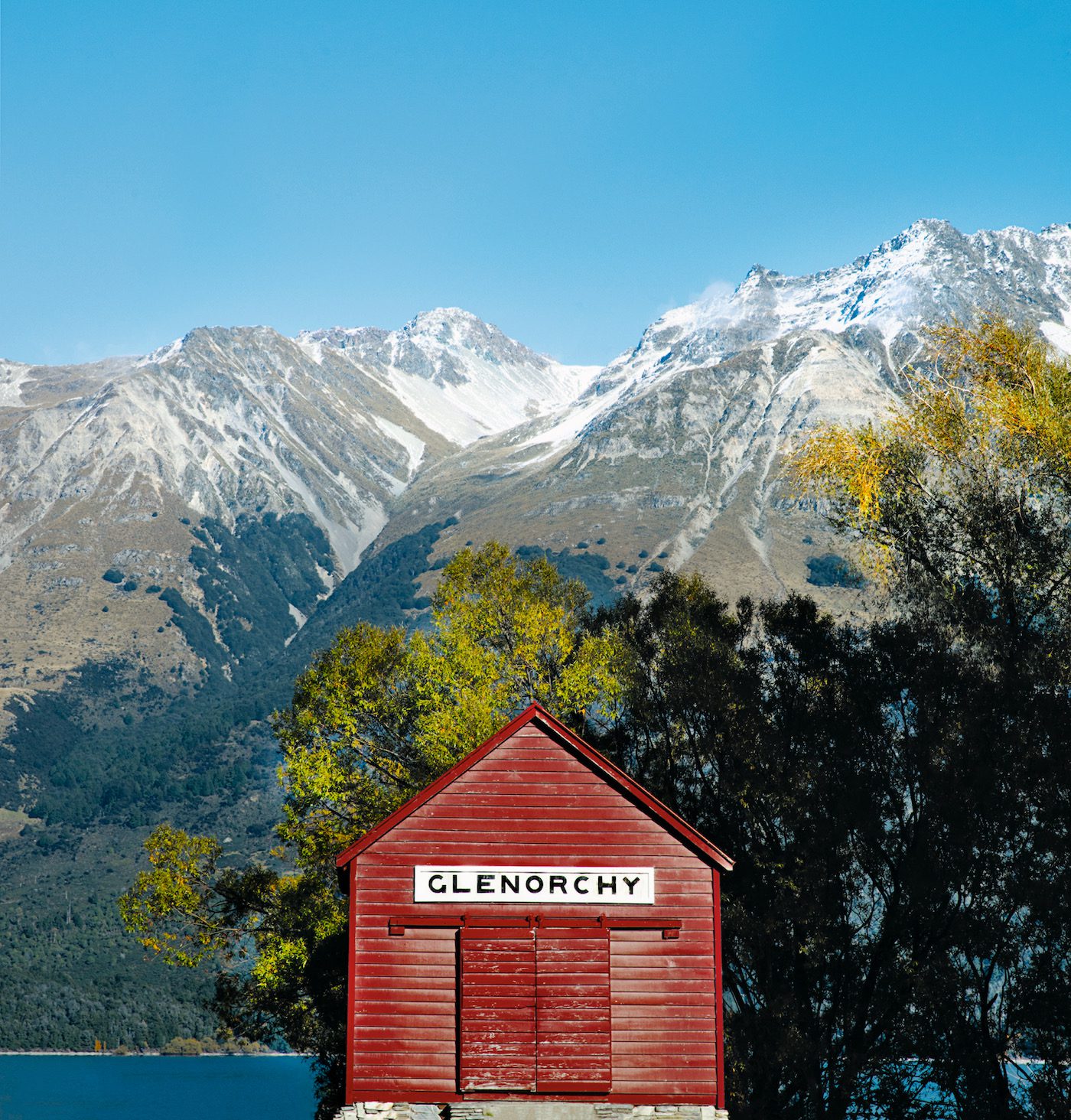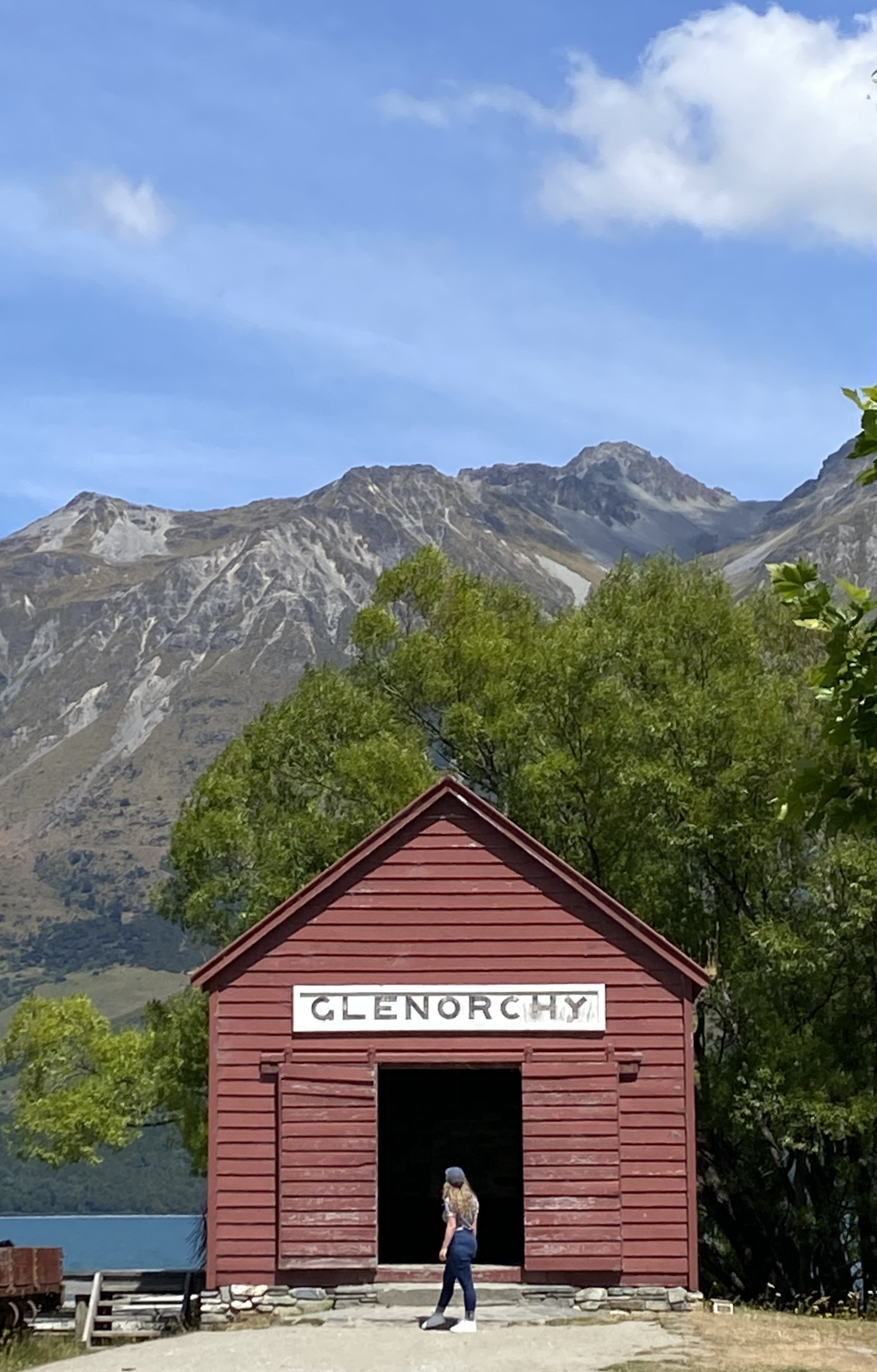Barcelona, Spain
Montjuïc Cable Car
This cable car in Barcelona celebrates its 50th anniversary in 2020.

Photo Credit: Frida Berg

Photo Credit: Hannah Windmill
Glenorchy is a settlement at the northern end of New Zealand’s Lake Wakatipu, about thirty miles from Queenstown. Settlers arrived at the base of this exquisite valley in the 1860s, searching for sheep-grazing land. They were followed by prospectors in pursuit of gold and scheelite (a mineral specifically sought for munitions manufacturing during the New Zealand Wars).
For nearly a century, the only access to Glenorchy was by steamboat. As the sole site for all arrivals and departures, this simple shed became the center of the town’s activity. Despite its importance to Glenorchy as a social hub, passengers rarely disembarked from the commercial steamers that stopped there, as the wharf grew so wobbly that stepping onto it drew comparisons to “walking the plank.”
By the mid-1950s, the 250 full-time citizens of the town came together and initiated a push for a road to connect Glenorchy to Queenstown. Though supported by many, the execution of the project was engineered by two remarkable individuals, each fueled by willpower and love…with extra assistance from a nudge of fate.
Reta Groves was born in 1922 and lived on a remote sheep farm near Routeburn Station, across Lake Wakatipu from Glenorchy. She and her sister, Betty, worked as “land girls” during World War II while the district’s men were abroad. They plowed the land, sheared the sheep, and drove farm vehicles from the age of ten.
Across the Dart River, Tommy Thomson grew up on a dairy farm in Dunedin, spending his childhood delivering “billy milk” (goat’s milk) throughout the North East Valley. He trained as a mining engineer and surveyor, and went to serve overseas. He escaped the 1942 Japanese invasion of Singapore by a matter of hours, only to venture on a long and hazardous journey home. Within ten days of his return, the Mines Department sent him to Glenorchy to survey areas for mining more scheelite.
Shortly after his arrival, Tommy attended a village dance that featured a game in which proverbs or well-known quotes were written out and cut in half. The women received one half, the men the other. After picking at random, you had to find the person who completed your quote—success yielded a dance partner.
Reta, never really one for games, sighed but obliged her sister, and pulled out the opening line: “Birds of a feather…”
It didn’t take long to find Tommy nearby, holding “…flock together.”
In the spring of 1945, the two married and soon had three children—Reta went by steamer across the lake to prepare for delivery a week before each of their scheduled birth dates.
She grew tired of relying on the unpredictable, thrice-weekly boat schedules, and worried about access to medical facilities for their growing children. Strong in her convictions, never one to settle, and prepared to roll up her sleeves, she insisted to Tommy that they needed a road to Queenstown.
And so Tommy built a road. First, he evaluated the landscape, deciding where a passageway could be built on the tricky terrain surrounding Glenorchy, which lies at the bottom of what was once a glacier. Then he enlisted the help of fellow villagers, who bulldozed until they were exhausted, then camped, then woke to bulldoze some more. The cycle repeated until Reta, Tommy, and the people of Glenorchy were free to come and go at will. In 1962, as an exclamation point to their Centennial celebrations, a delighted Reta Thomson was the first woman to drive over their newly opened road.
Tommy and Reta remained married for nearly seventy years, until his death, in June 2014. She passed away two years later. They devoted their lives to bettering the future of the whole valley, always working together to make it happen.
Once the road was built, residents were no longer dependent on the steamers, so commercial use of the Glenorchy wharf ceased. But each time the iconic shed has washed away, collapsed, or destroyed due to age or natural disaster, the villagers have rebuilt it. The only difference between the present exterior and that of its predecessors is that the sign, which once faced the water, now faces the village. It serves as home to a historical society and a small museum, complete with information about the changes in landscape, transport over the years, and the birds-of-a-feather characters who enabled Glenorchy’s evolution.
Included in AWA, The Postcards 👇

AWA Community Insight:
mt_fujitiveThis is now a little museum and inside there is information all about the region’s history. My relatives worked the region back in the day and my great Aunty Nancy is mentioned in one of their columns.
 -44.851443, 168.381839
-44.851443, 168.381839
Need an account? Sign up
This site is protected by reCAPTCHA and the Google Privacy Policy and Terms of Service apply.